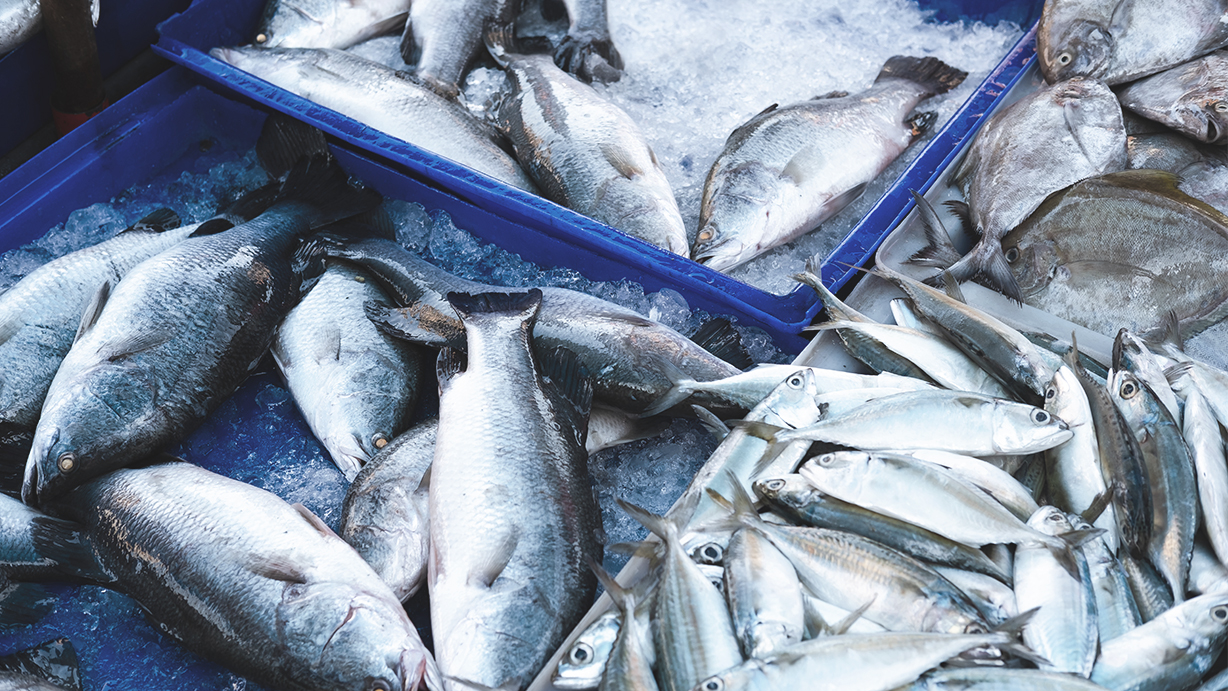We all know that including fish in your diet is essential since it is a very healthy food with numerous properties.. Nevertheless, On the seabed there is a wide variety of fish and sometimes it is not easy to know which one is best for us.. That's why, Today we are going to talk about the difference between blue fish and white fish.
Keep reading to discover all its nutritional properties.
Physical differences between blue and white fish
Roughly, the main difference between blue and white fish is its fat content. According to the proportion of lipids that the fish has in its muscle, this will be one kind or another. But you also have to keep in mind that depending on the time of year, fat percentage may vary, thus becoming semi-fatty fish. That is why we should not only look at the fat content, but there are others differences between blue and white fish in appearance that we must also take into account.
Blue Fish
Fat
Blue fish has a higher percentage of fat than white, between one 5 and a 10%. This is because blue fish migrate and to swim with more power they need to accumulate intramuscular fat., namely, in his muscles. This fat allows them to use more energy for their development and metabolism., making them better able to withstand long journeys.
Color
Both the amount of fat and the waters in which the blue fish make your skin look blue.
Habitat
Blue fish live in areas with very cold waters and near the surface.
Cola
Other difference between blue and white fish it's the shape of his tail. Blue fish have an arrow-shaped or vee-shaped tail., which improves swimming in large displacements.
Examples of blue fish
Some of the most common oily fish are: sardine, salmonete, tuna, salmon, trout, bonito, swordfish, turbot, mackerel, anchovy, popcorn, eel, herring, mackerel, angular, lamprey.
White fish
Fat
The White fish is sedentary, does not make trips, and this is the reason why accumulates much less fat than oily fish, between one 1 and a 3%. Also, other difference between white and blue fish, is that white fish accumulates fat around the liver, not in muscle mass.
Color
Los white fish, as the name suggests, they have white skin. This is due to the lower amount of intramuscular fat they have as well as their habitat.
Habitat
White fish inhabit much deeper areas than blue fish.. They do not need to move since they find their food in the areas near the bottom.
Cola
In this case, white fish have a straighter and flatter tail than blue fish.
Examples of white fish
If you want to buy white fish, you can choose between: gallo, sole, hake, cod, goat, whiting, rape, conger, turbot or faneca, among others.
Nutritional differences between blue and white fish
In addition to the physical differences that we already mentioned, there are also several nutritional differences between blue and white fish. Both are nutritionally rich., because they have several quality proteins as well as minerals and vitamins. Nevertheless, we can establish a differentiation between both fish based on their nutritional contribution.
Blue Fish
Its high percentage of fat means that it has a high caloric intake.
It has unsaturated fatty acids such as Omega 3.
Contains more fat-soluble vitamins such as vitamin D, E and A.
It is richer in protein and minerals.
All these properties make oily fish very appropriate for pregnant children. Also, the omega 3 helps clean arteries, What is a cardiovascular benefit?.
White fish
It has less fat, which means lower percentage of calories.
It is rich in B complex vitamins, especially in vitamin B12.
It has less protein and minerals than oily fish.
By having fewer calories, white fish are easier to digest.
Which is better?
Since canned from the port we recommend that it is best to alternate between one fish and another since both are beneficial for our health. By being clear about what the differences between blue and white fish, You can make your diet according to your needs but you should avoid extremes. A varied diet will allow you to benefit from the healthy fats of blue fish and compensate them with the low caloric intake of white fish..
That's why, We recommend that you eat both types of fish and do so at least 3 times a week. This increases life expectancy and decreases the risk of heart disease and obesity..





